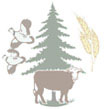Agroforestry Practices
Forest Farming
In forest farming, high-value specialty crops are grown under the protection of a forest canopy that has been modified to provide the correct shade level. Crops like ginseng, shiitake mushrooms, and decorative ferns are sold for medicinal, culinary, and ornamental uses. Forest farming provides income while high-quality trees are being grown for wood products. Turkey, deer, songbirds and wildlife may find ideal habitat in a forest farming setting.
Forest Farming Success Story
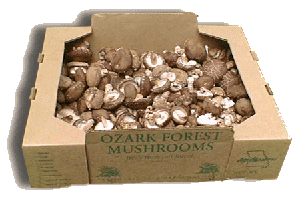
|
Cultivating Specialty Mushrooms through Forest Farming
Ozark Forest Mushrooms, Timber, Mo.
One of the state's most significant demonstrations of a successful forest farming practice is Dan Hellmuth and Nicola MacPherson's Ozark Forest Mushrooms, Timber, Mo. The entrepreneurial couple established the specialty mushroom operation in 1990 on what was then a timber operation, and coordinate every step of the value-added process, from the inoculated log to packaged, consumer-friendly products. Under the guidelines of the Stewardship Incentive Program, administered by the Missouri Department of Conservation (MDC), Hellmuth and MacPherson harvest a renewable supply
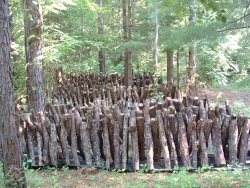
|
A new greenhouse with a wood furnace for burning spent/culled shiitake logs has recently been completed for researching mushroom cultivation during the cold season and sustainable usage of wood resources.
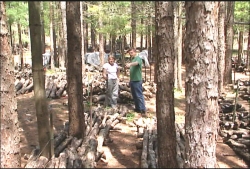
|
"It's hard work that doesn't stop," MacPherson said, "but when I walk into a restaurant and see my mushrooms on the menu, or walk into a supermarket and see our products on the shelf, that gives me huge pleasure and makes all the work worthwhile."
Markets for Ozark Forest Mushrooms include retail grocers and chefs across Missouri. Visit http://www.ozarkforest.com to learn more. The business was also featured in a previous issue of Green Horizons.
Additional Resources:
Medicinal Herbs: A Forest Farming Opportunity
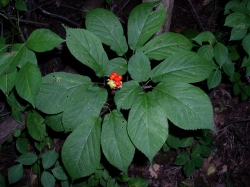
|
Market prices for ginseng, black cohosh and other medicinal herbs are rising. These shade-loving plants thrive in the canopy created by a forest farming practice.
Researchers at the University of Missouri Southwest Center at Mt. Vernon, Mo., are collaborating with the Center for Agroforestry on one of the nation's premier studies for the cultivation of Black Cohosh for medicinal uses. Read more about this project.
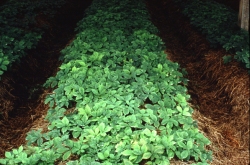
|
Ginseng: The Center's collaborative research program includes work to study the effects of deer on American ginseng, as well as ongoing research on cultivation of simulated ginseng in Missouri. Read report "Effects of Deer Herbivory on Population Dynamics of American Ginseng."
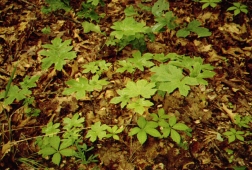
|
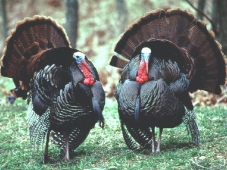
|
Value-Added Forest Products:
A successful forest farming practice begins with sustainable forest management and timber stand improvement strategies, which can help create an environment for shade crops like mushrooms and medicinal herbs to flourish. These practices may also offer income potential for value added forest products, such as wood blanks and furniture-grade lumber.
Value Added Forestry Success Story:
Oak Leaf Wood 'N Supplies,
Moweaqua, Ill.
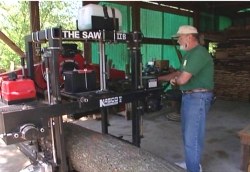
|
| Paul Easley purchased a portable sawmill and dry kiln for processing "trash" wood from his acreage into value-added products. |
Easley has established a successful business during the past 18 years, utilizing a portable sawmill and a dehumidification dry kiln. His retail store, Oak Leaf Wood 'N Supplies, sells retail hardwoods, imported lumber, hand tools, and woodworking supplies to customers across the U.S. and overseas, in addition to the value-added wood products that are sawed, dried, planed and shaped on-site - including cabinet and furniture-grade lumber, carving stock and mantles.
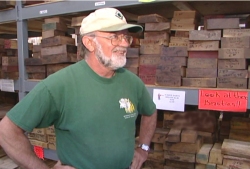
|
| Easley's store, "Oak Leaf Wood 'N Supplies," offers a variety of wood blanks for producing furniture, flooring and hobby wood projects. |
"We believed there had to be a wiser use for the trees that needed removed than trash wood or firewood," said Easley. Through selective harvesting, he removes undesirable species from his woodlots for processing into value-added products, then replants new trees.
"Do the job with a smile on your face and be enthusiastic about your product. Do that, and talk with your customer, you can succeed. We're living proof."
Read more about Paul Easley in Green Horizons
Learn more about forest farming from the following UMCA resources, available for viewing or ordering from the Publications page:
- The Agroforestry 5-Practices DVD has a chapter featuring forest farming, with successful Midwestern examples.
- The Training Manual for Applied Agroforestry Practices, available for viewing or ordering from the Publications page, contains a chapter about forest farming and an information resources list.
- Read about Center for Agroforestry forest cropping research in the 2009 Research Highlights (PDF, 3.71 MB).

